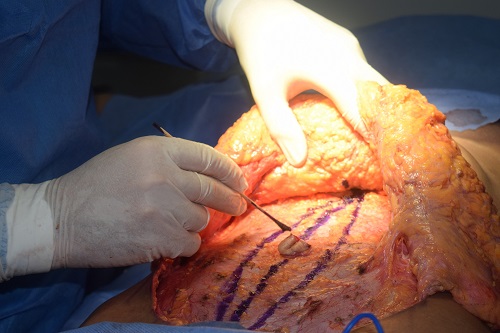Most patients envision a hospital when they think of undergoing surgery. However, plastic surgeons often perform their procedures outside of the hospital setting, on an outpatient basis. If you’re thinking of focusing on one of the highest-paying medical specialties, knowing more about where and how plastic surgery is most commonly performed is a good start for your future career path. Although the majority of plastic surgery procedures are performed in offices and ambulatory surgical centers, there are some procedures in this specialty – including lengthy or extensive reconstructive surgeries – for which a hospital environment is recommended.
A Primarily Outpatient Specialty
More than 90 percent of plastic surgeries performed in the United States in recent years were done as outpatient procedures, according to the American Society of Plastic Surgeons. Some of these plastic surgeries were completed in an outpatient surgical center separate from a hospital, while others took place right in the plastic surgeon’s office. Even plastic surgeons who typically perform procedures in non-hospital settings often still have hospital privileges at a nearby medical center, where patients can be easily transferred and tended to if complications arise, SELF reported.
Why are plastic surgeries typically done outside the hospital setting? In many cases, plastic surgery procedures are less intense surgeries than, for example, orthopedic surgeries, cardiovascular surgeries and neurological surgeries, so they can be safely performed outside of a hospital. The procedures themselves carry less risk, since they primarily affect the patient’s appearance and are generally performed on healthy patients, not those suffering from active medical conditions. In a study of 26,302 outpatient plastic surgeries conducted over a period of more than 20 years, fewer than one percent of patients developed complications, the American Society of Plastic Surgeons reported.
Minimally invasive cosmetic procedures, such as microdermabrasion, chemical peels, Botox and dermal filler injections and laser hair removal, are typically performed in the doctor’s office, as well.
When Is Hospitalization Necessary?
IMAGE SOURCE: Pixabay, public domain
There are certain circumstances under which a hospital is the preferred setting for a plastic surgery procedure. Generally, the more extensive the procedure, the more likely a hospital environment will be recommended due to the greater risk of complications.
Plastic surgery patients who undergo multiple procedures in the same sitting or whose single or combined procedures are likely to take longer than four hours to complete may be safer in a hospital than a plastic surgeon’s office or outpatient surgery center, the American Society of Plastic Surgeons reported. So are those who undergo an unusually large volume of liposuction, especially above three liters of fat in a single procedure. Patients who are obese may be worked on in a hospital setting regardless of the length and extensiveness of the procedure they are undergoing, since obesity itself is a risk factor for suffering surgical complications.
Many of the procedures that are most commonly done outside of hospitals fall into the category of cosmetic plastic surgery, or surgery performed for aesthetic purposes. The number of cosmetic surgeries has been trending upward in recent years, rising to 1.8 million in the United States alone in 2018, according to Healthline. However, not all plastic surgeries are cosmetic surgeries. Reconstructive surgery is a big part of the specialty of plastic surgery and involves using the techniques of plastic surgery to address defects in both function and appearance that are caused by congenital abnormalities or by acquired injuries and illnesses. Reconstructive surgeries are often more extensive than purely cosmetic surgeries are, because the plastic surgeon may have to restore structures and functions that are missing. Depending on the cause of the deformity, there may also be underlying damage, such as the harm caused by a serious burn, a motor vehicle accident or a brutal attack.
Some plastic surgeons perform reconstructive procedures on patients who are already hospitalized due to an injury. These plastic surgeons may work in trauma units and emergency departments of general medical centers. This practice of transferring injured patients to an in-house or on-call reconstructive surgeon for an emergency plastic surgery evaluation is particularly common when the injury affects the face or hands, the American Society of Plastic Surgeons reported.
Another reason cosmetic procedures are more often performed on an outpatient basis is because outpatient surgery is more cost-effective. Most health insurance policies don’t cover cosmetic surgeries, so patients are more acutely aware of the costs.
Additional Resources
What Is the Difference Between Cosmetic and Reconstructive Surgery?

